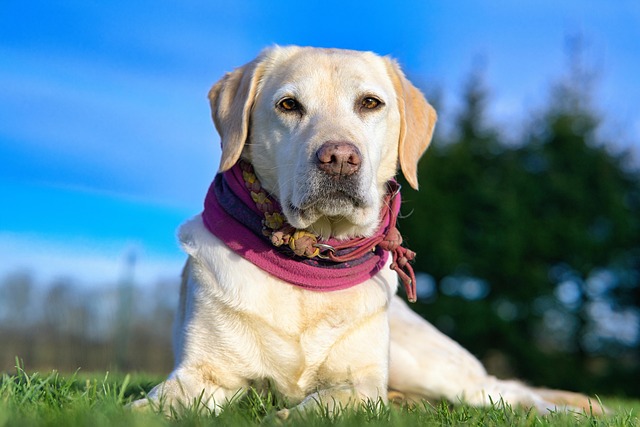
How do i train my dog to be obedient?
Watching your dog dart across the park ignoring your calls isn’t just frustrating—it can put them at risk near busy streets or public spaces.
Labrador puppies are bundles of energy, and their tiny teeth can feel sharp when they nip—but this behavior isn’t just about play. It’s often how they explore the world, so training them to stop needs patience, not frustration. Start by redirecting their attention: when your puppy goes to bite your hand or clothes, offer a chew toy right away. This teaches them what’s acceptable to sink their teeth into, which aligns with many local guidelines that encourage positive reinforcement over punishment.
Always remember to respond calmly when nipping happens. Yelling or pulling away sharply can make some puppies more excited, turning the behavior into a game. Instead, let out a soft “ow” to mimic how another puppy would react—this helps them understand they’ve gone too far. Also, check your area’s pet welfare rules; many places prohibit harsh training methods, so sticking to gentle cues keeps you compliant and builds trust with your pup.
 Consistency is key for Labradors, who thrive on routine. Everyone in your home should use the same redirection technique—if one person lets the puppy nip while another stops it, your pup will get confused. Make time for short, daily training sessions (5-10 minutes works best) since puppies have short attention spans. You can also include socialization with other calm dogs or people, which helps reduce excessive nipping caused by excitement or fear.
Consistency is key for Labradors, who thrive on routine. Everyone in your home should use the same redirection technique—if one person lets the puppy nip while another stops it, your pup will get confused. Make time for short, daily training sessions (5-10 minutes works best) since puppies have short attention spans. You can also include socialization with other calm dogs or people, which helps reduce excessive nipping caused by excitement or fear.
Don’t forget to reward good behavior! When your puppy chooses a chew toy instead of nipping you, give them a small treat or lots of verbal praise (“Good job!”). Positive reinforcement helps them associate not biting with nice things, making them more likely to repeat the behavior. Avoid leaving valuable items like shoes or remote controls within reach, as this tempts puppies to chew on the wrong things. If you’re struggling, consider a local, certified dog trainer—many areas have trainers who specialize in puppy behavior and follow regional animal welfare laws.
Training your Labrador puppy not to bite takes time, but it’s one of the most important steps in building a happy, safe bond. As your pup grows, they’ll learn to control their impulses, and you’ll both feel more confident in daily life—whether you’re taking walks in the park or relaxing at home. By staying patient, consistent, and kind, you’re not just stopping nipping—you’re teaching your puppy to be a well-mannered member of your family, which fits right in with how most communities welcome responsible pet owners.

Watching your dog dart across the park ignoring your calls isn’t just frustrating—it can put them at risk near busy streets or public spaces.

New puppy owners often find themselves rushing to clean up accidents before they set in, and that’s where puppy pad training becomes a game-changer.

If you've noticed your dog's waistline disappearing and your veterinarian has mentioned those few extra pounds, your first instinct might be to simply reduce the amount of food in their bowl.

Training a dog to use a designated spot indoors isn’t as daunting as many new owners fear, but it does take consistency and an understanding of your pet’s needs.

That moment of dread on a walk is all too familiar for many new dog owners. You see another dog approaching down the sidewalk of your neighborhood

If the sight of another dog on your neighborhood walk makes your heart sink as your own dog erupts into a frenzy of barking and lunging, you're not alone.